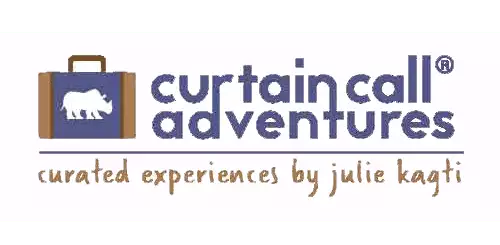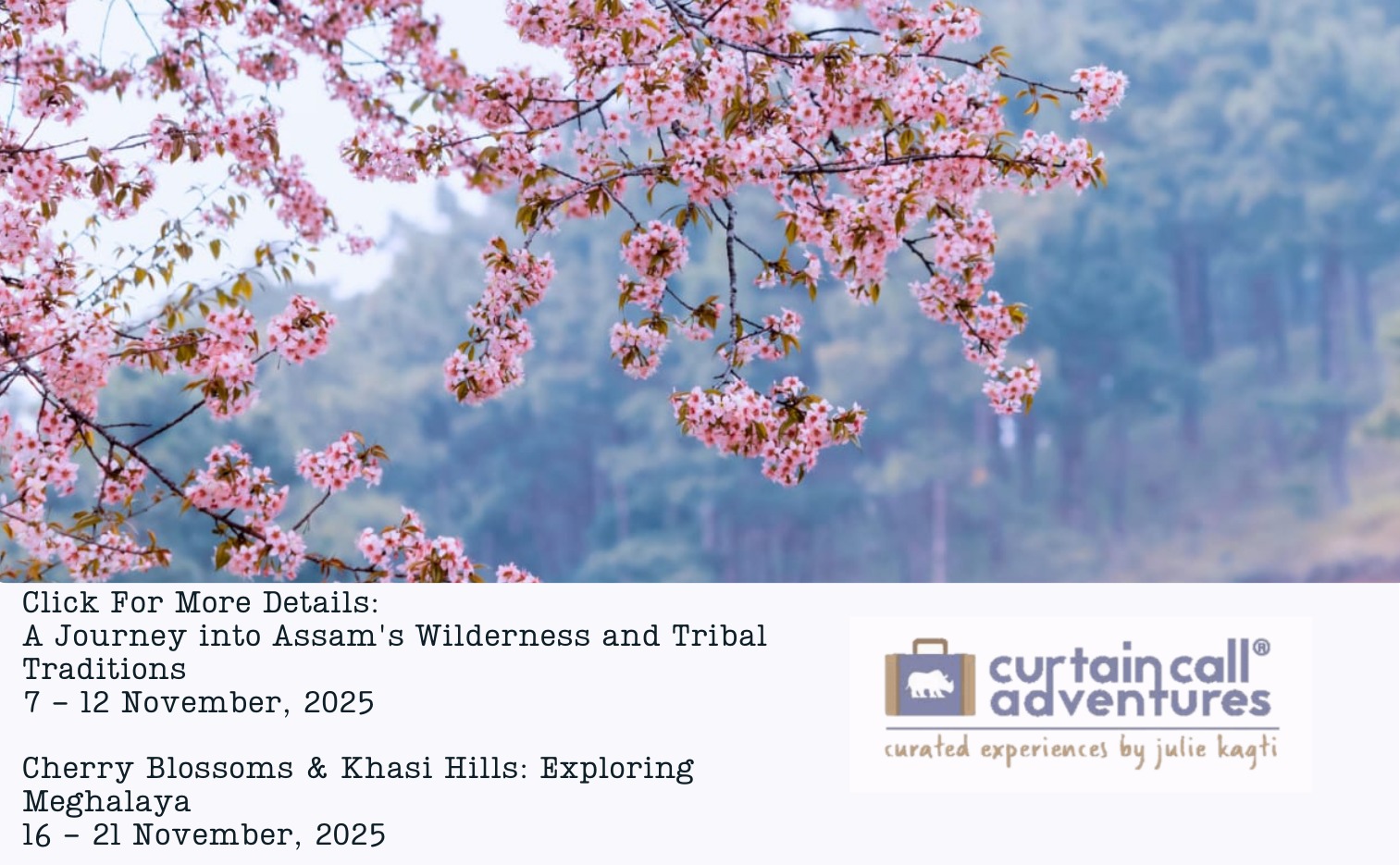A story about an elopement, the marriage that follows and the age-old customs that graced the occasion.
A beaming Rajib greeted me outside Imphal’s quaint airport. He is my travel partner for Manipur. As we walked towards the car park chatting about our upcoming textile tour, he mentions – “Now I have an Assamese driver on my team; he is from the Bodo tribe. You will meet him during the trip. Smart boy, I
have sent him out to do some errands today.”
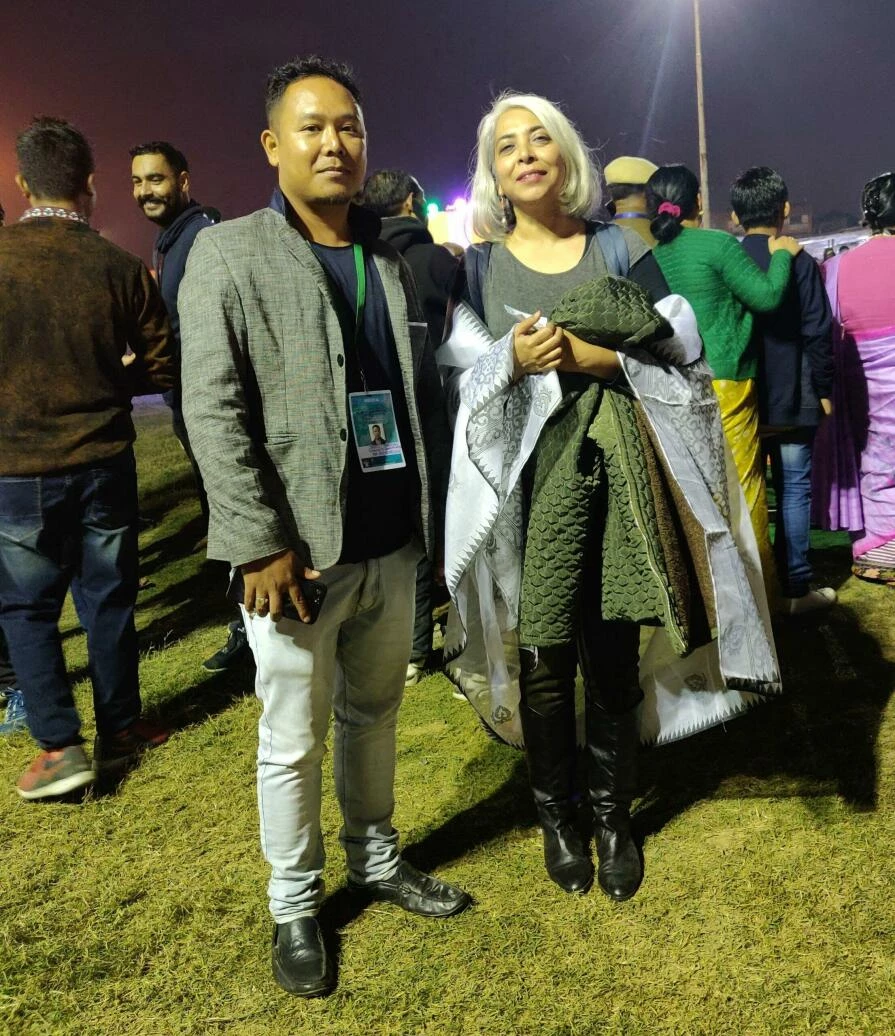
His comment aroused my curiosity because the tribesmen rarely venture out of their own region to other states unless it’s a government job posting or move to the mainland (as the rest of India is referred to) for jobs or studies. In Bangalore, I have met a few working as security guards and service attendants in departmental stores. I pondered over this as we drove through the main street of Imphal lined with one-storeyed buildings on both sides and a clear sky
above.
/ga
Sure enough two days later as the cars pulled up in the lobby of the Classic Grande hotel, a man in his early 30s jumped out from one of the Ertiga Suzukis and greeted me – “Baideo (elder sister in Assamese), I am Dhanjit, how are you?” “I am well, thanks and you?” I responded. After a brief pause, I followed it with another question – “How did you land in Imphal?”
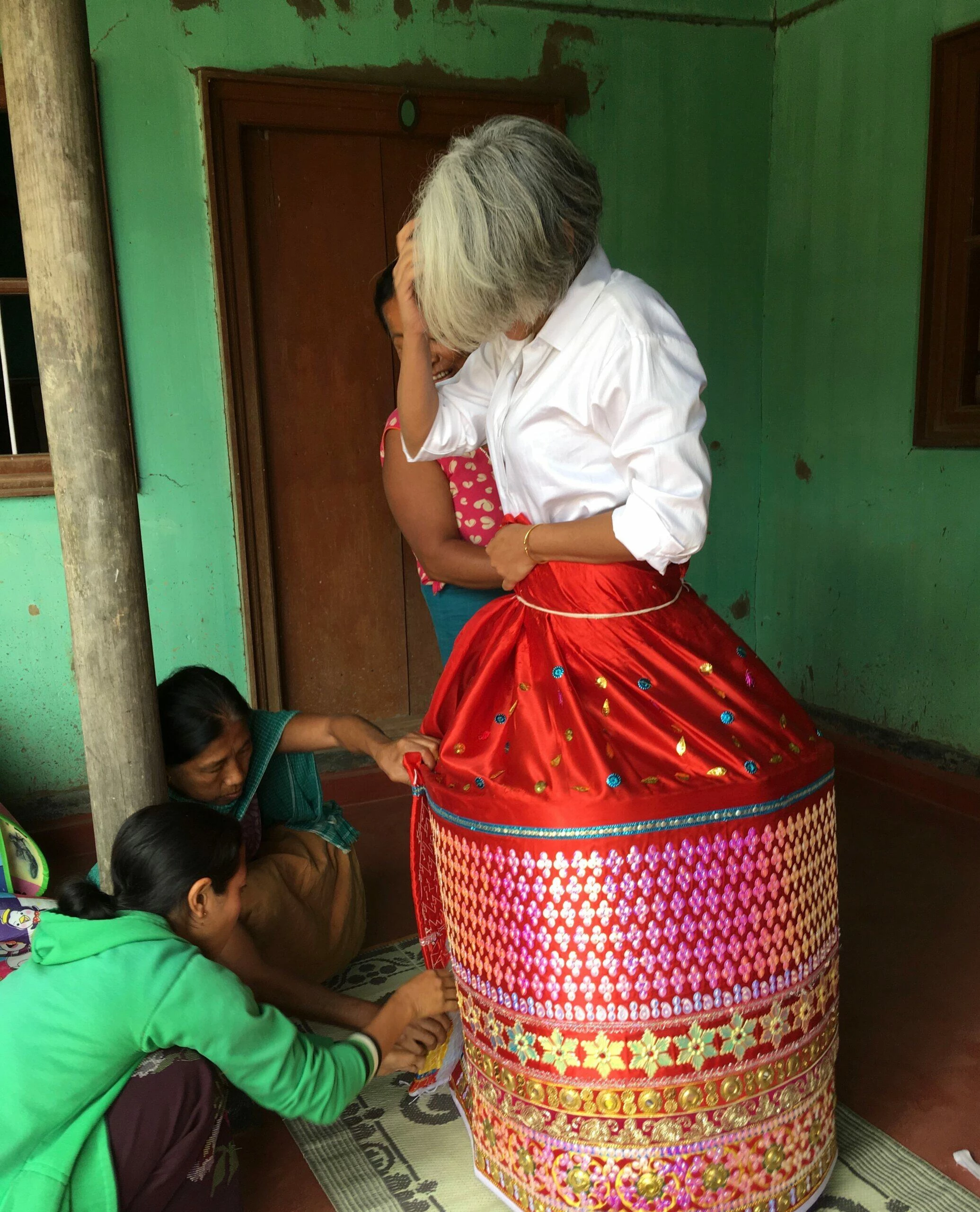
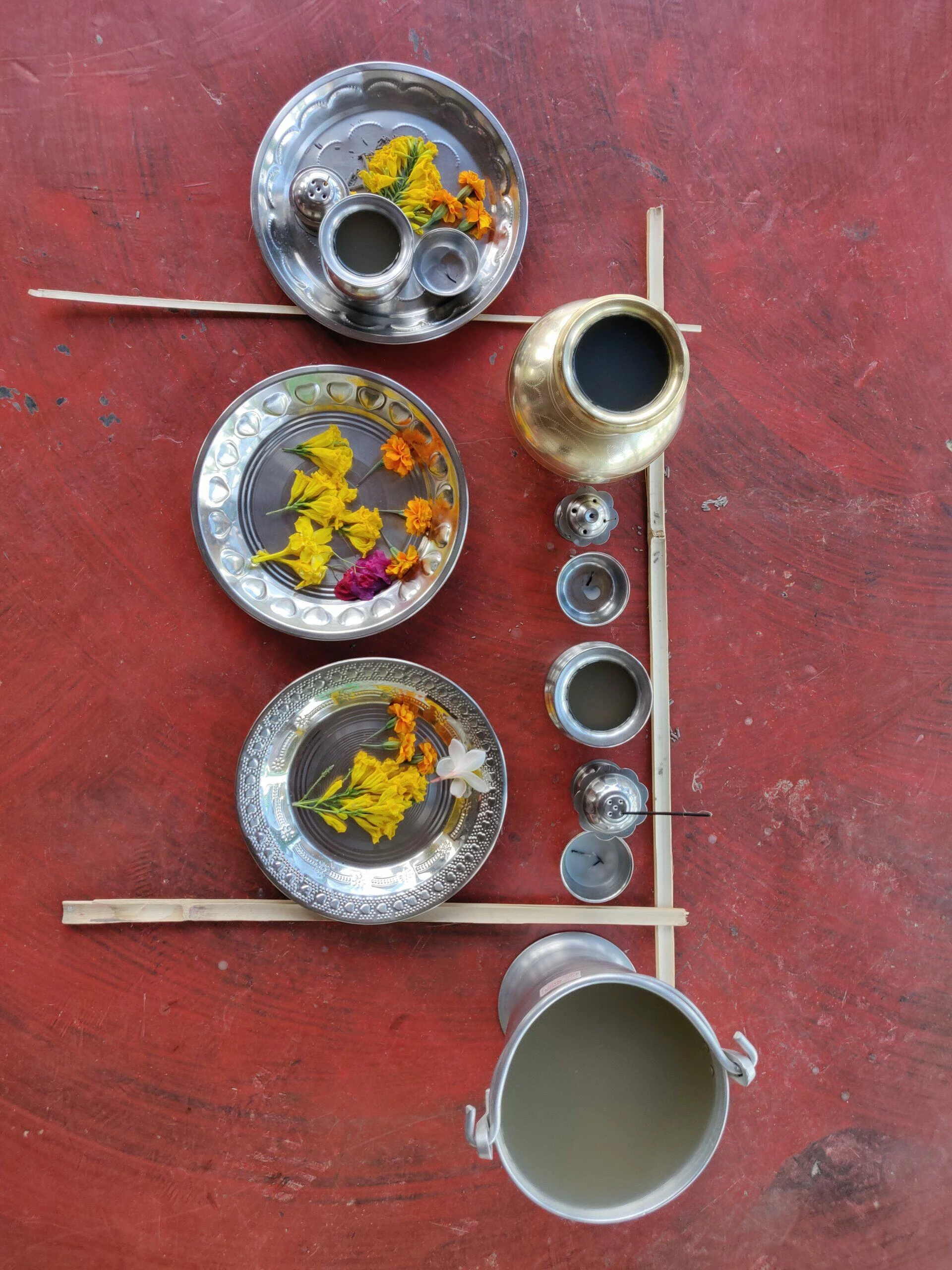
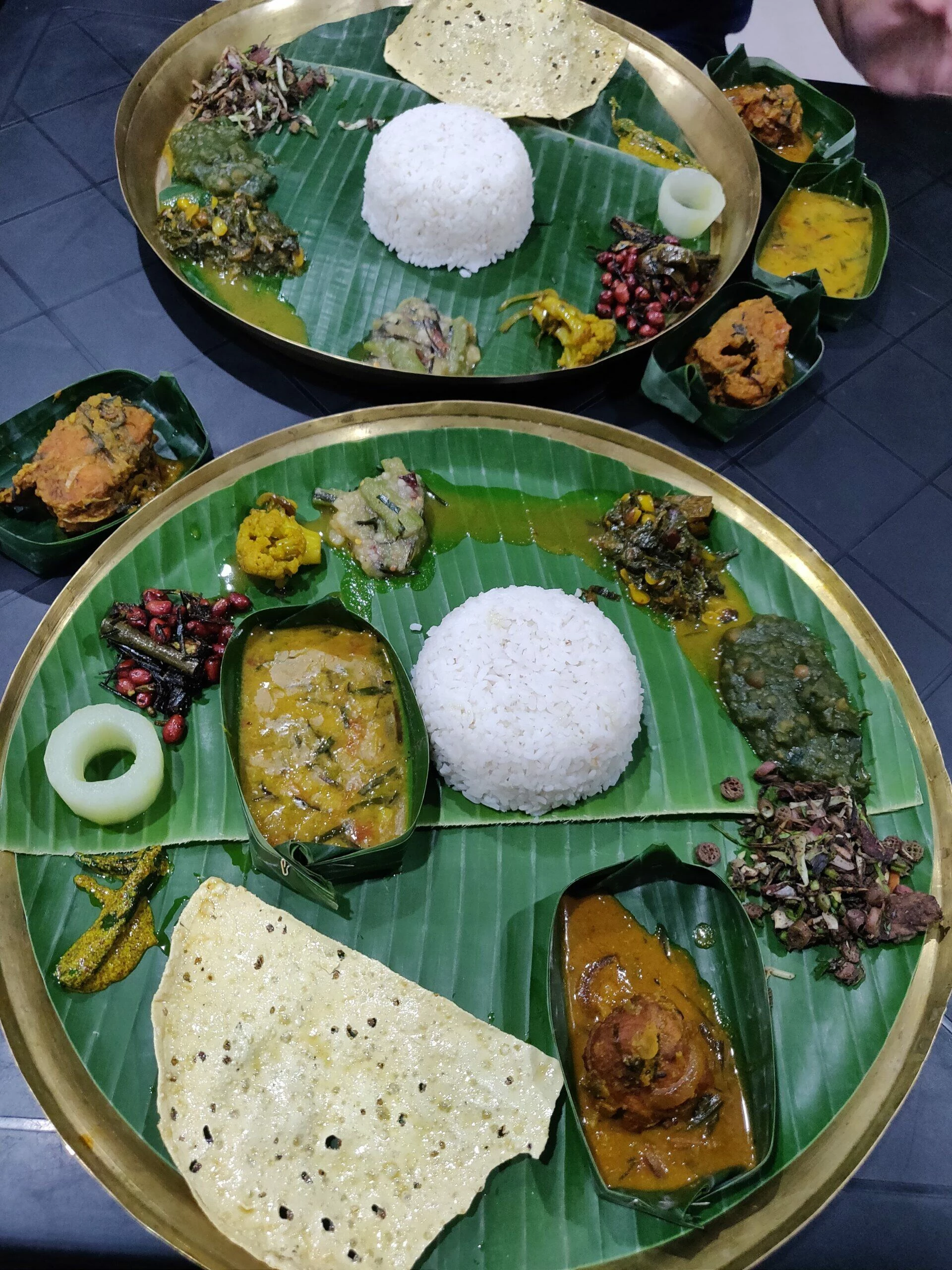
Watching him speak fluently in Manipuri to Rajib, I realised that he has been around these parts for a while. “Oh,” said Dhanjit, “I married a Manipuri girl from the Meitei community five years ago and since then we have been living here.” Our conversation continued as we drove around for the day’s excursion.
“I worked for eight years in Bangalore at the Calvin Klein Jeans showroom and nearby lived a Manipuri family who were related to my ex-girlfriend. I started visiting them occasionally and that’s how I met my wife… she is their sister. She was studying in Bangalore.” He grinned sheepishly and continued – “After dating for few years we decided to get married. We sort of eloped.”
“How did your parents react to your marrying a non-Bodo girl” I asked. He laughed and said – “My parents were upset and told me to go drop her back home, that’s why we eloped otherwise everyone would have discouraged us. Her parents too weren’t very pleased but finally they all came around.”
“After that did they organise a wedding or ceremony for both of you?” “Yes,” he responded.
A simple ceremony was arranged by the girl’s parents who belong to the Meitei community, the dominant inhabitants of Manipur. It was their wish to accept the marriage after elopement. It was marked by the exchange of garlands by the bride and groom followed by hymns recited by the priest. The bride actually threads the garlands herself as per the wedding traditions. The Meitei community are Hindu Vashnavite devotees of Lord Krishna. All the rituals in a Manipuri wedding are centred around the auspicious tulsi plant.
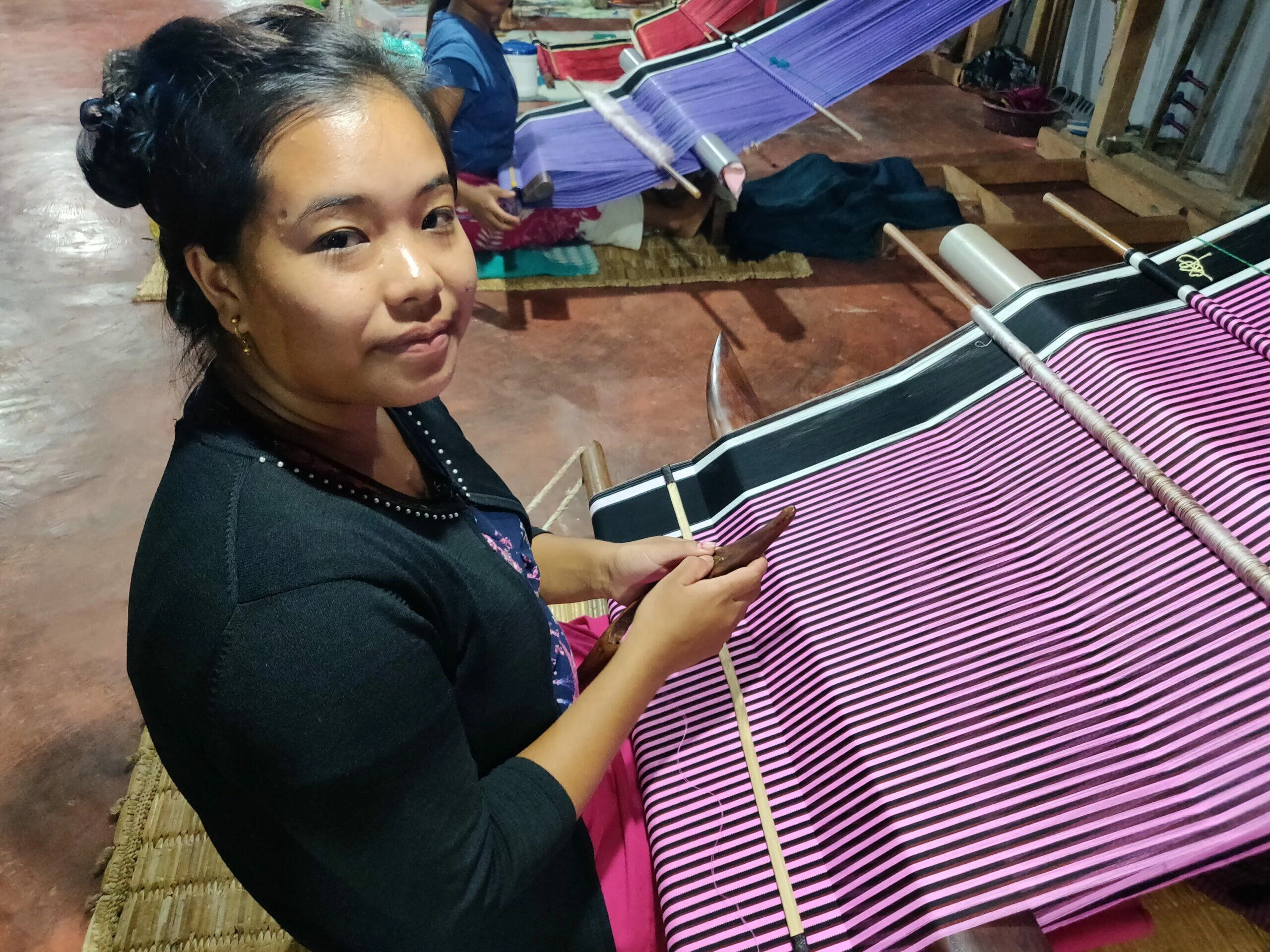
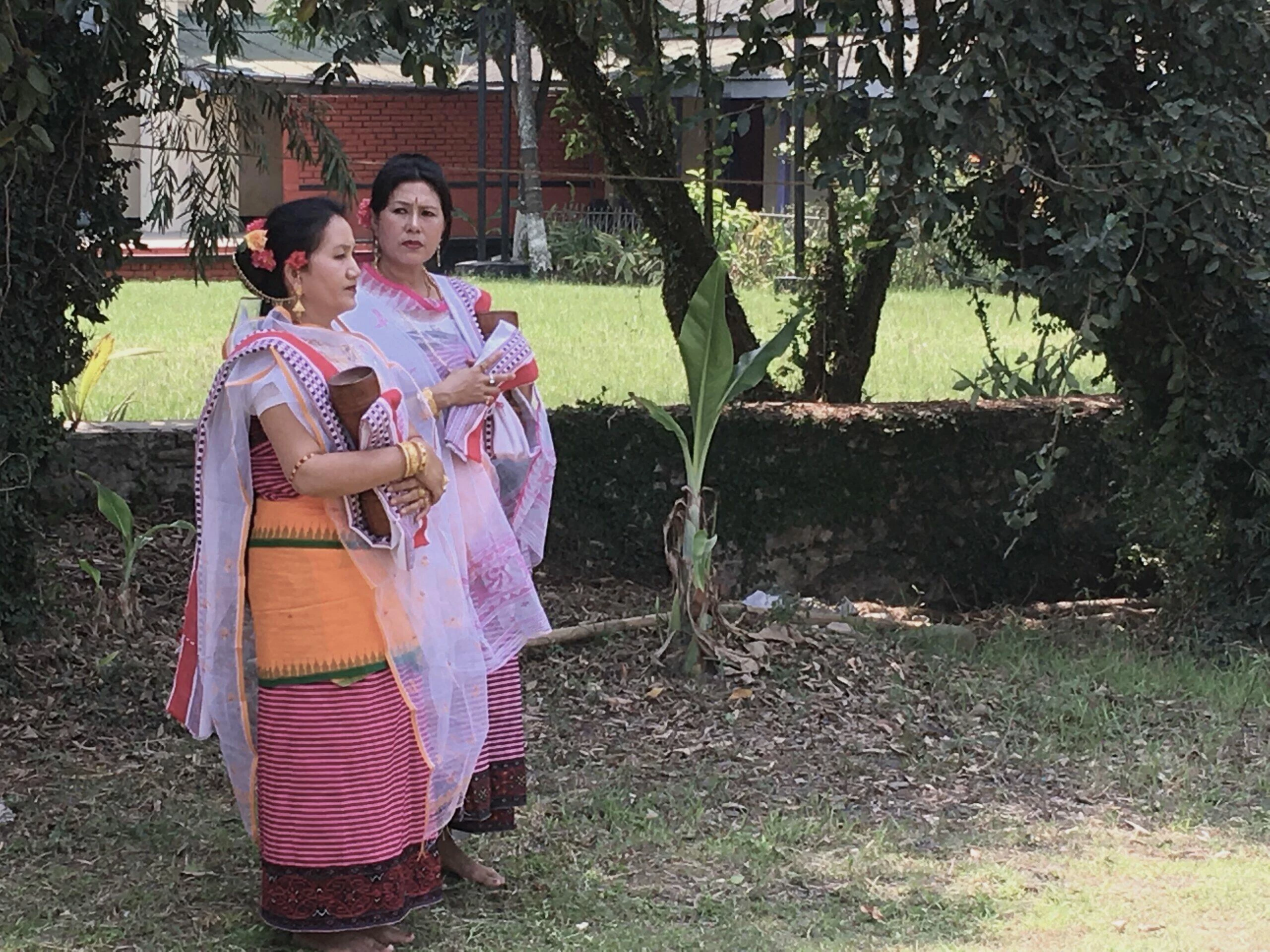
The immediate male family members of the couple and the groom wear pure white – dhoti, kurta and shawl, while the women wear pink and white striped phaneks (sarongs) and Rani fi (a thin gauze chador with intricate woven patterns, usually tone on tone done in white). The jewellery worn by the bride
is in pure gold, very light with delicate filigree work.
“Baideo, the celebrations took place here and in my village. It turned out to be a very elaborate affair. According to customs, I had to provide a few items for the bride and her family during the ceremony where relatives were invited and fed.”
“What sort of food was served?”
“Mainly vegetarian with one fish dish. Then I had to go back home and host a
feast for the village and relatives in Assam.”
“Did you give her any jewellery, clothes?”
“I got her some clothes and make up that she wanted but my mother gave her
a few things while we were in Assam.”
The Bodos are of Mongoloid origin and a major tribe of Assam. They have their own language and script. They are considered the first inhabitants of the Brahmaputra valley and follow a mix of rituals based on Hinduism and old indigenous tribal customs. Dɯnkharnai Haba is a term in their language for when a boy and girl run away to a distant place and live together.
“Is your village located near Bongaigoan?”
“No,” he said, adding, “A bit further from there, Daranga village is very close to the Bhutan boarder. Very pretty, not much weaving going on though. Most youngsters like me have gone out in search of work.”
“What was on the menu for your feast at Daranga?”
“Back home celebrations have elaborate menus. The food was delicious, a few vegetable dishes like stir fried mustard greens and chutneys, rice, pork curry and fish. Rice beer is served to all and almost the whole village comes. Pork and fish are served for most of our Bodo celebrations.”
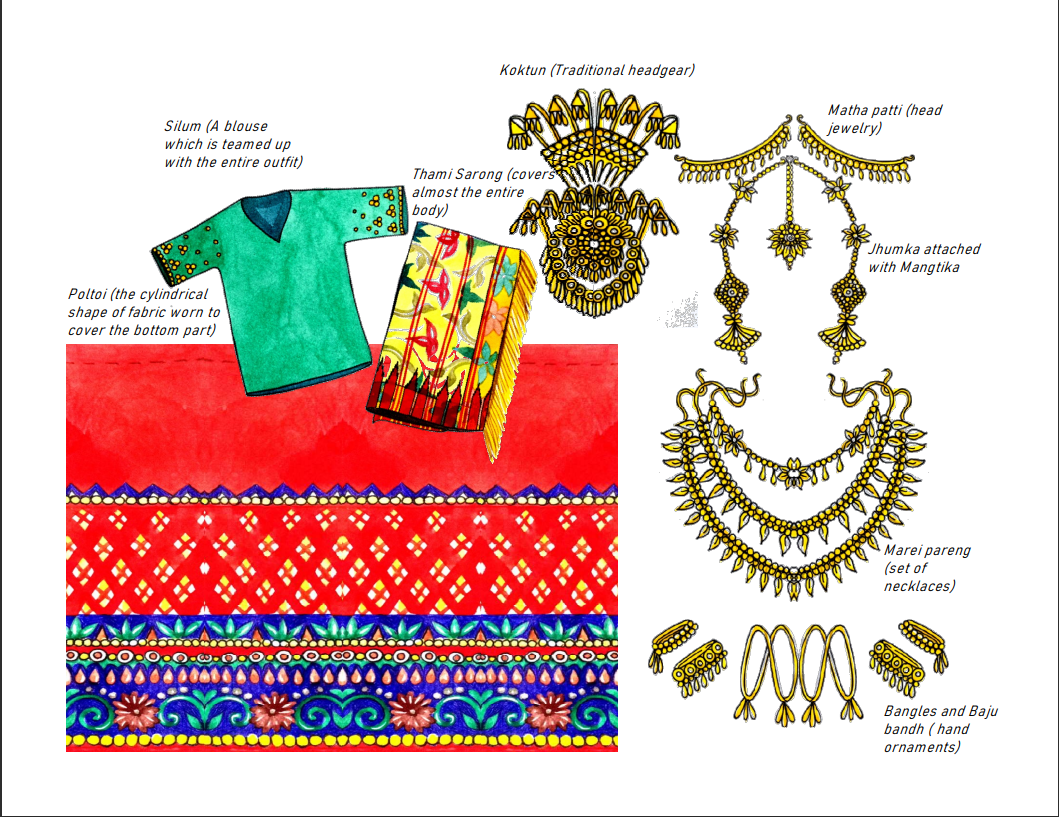


He grinned and continued, “Flight tickets both ways, gifts, plus the feast a very expensive affair.”
We had reached the Peace Museum, set up in collaboration between the Japanese government and Manipur government. I got out and ushered the guests inside. The presentations were well displayed and portrayed a neutral story of the incidents that took place during World War II in Manipur. The showcase also included a life-sized model of a Meitei village homestead with bamboo huts, looms set in the courtyard, fishing paraphernalia and tiny houses used for the livestock. The Phiruk stood out from the array of handmade bamboo baskets on display. It is a ceremonial basket with a distinct pattern used in Manipur during functions for carrying sweets, paan and betel nuts, fruits, flowers, clothes and ornaments. Womenfolk in traditional attire carry these baskets on top of their heads in a procession held by the family of the groom to gift the bride’s family. It is truly a sight to see these women dressed up in their Phaneks and the translucent white Rani fis and their hair adorned with red roses walking gracefully in a line.
According to custom, the woman who leads the marriage procession must have her parents, parent-in-laws, husband and children alive. This symbolically marks the attainment of fertility and prosperity for the couple who are getting married. I hope Dhanjit and his wife have a long and content married life.
In conversation with Dhanjit Ramchiary.
